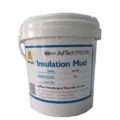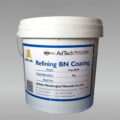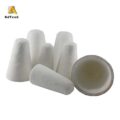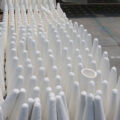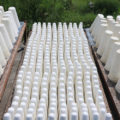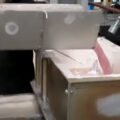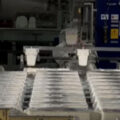The thermal insulation of refractory foundry coating depends not only on the thickness of the coating, but also on the porosity of the coating itself. The thickness of the coating has an optimum range. Experience shows that the thickness is generally about 150m-250m. The porosity of the coating is largely affected by the application method and conditions used, because the degree of pore formation in the coating basically depends on the evaporation rate of the cavity surface in contact with the water carrier. The most commonly used mold coating method is spraying, but sometimes by brushing, for example in the gate system and riser area.

Generally, the best refractory effect can be obtained at about 170 ~ 200 ℃. However, the coating viscosity and spraying equipment also affect the quality of coating deposition layer. Therefore, depending on the viscosity of the mold and the spraying equipment, sometimes when the mold temperature is high, it must deviate slightly from the optimum coating temperature. There will be a strong reaction to high temperature. Generally, larger porosity can be obtained, and the thermal insulation performance of the coating is better. However, too high mold temperature will lead to a strong “rebound”, which makes it difficult for the coating to adhere to the surface of the cavity, resulting in the coating adhesion to the mold and life reduction.
On the contrary, when applied at a lower temperature, although the refractory foundry coating has a longer life, the coating is dense and its thermal insulation performance is poor, and too low application temperature will make the coating uneven and form spots. When the mold is heated to the working temperature, the coating will crack and peel off defects, and when the moisture absorbed in the coating evaporates at high temperature, the adhesive film will crack.

